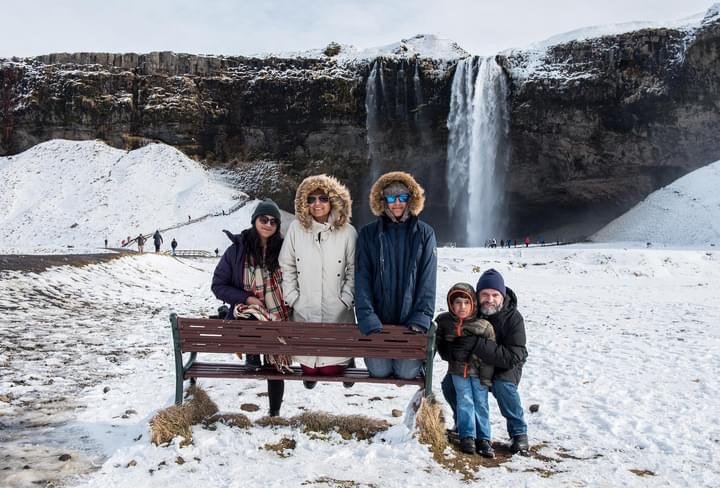By Maria Cuevas
Gender-based violence against women has existed in Mexico for a very long time. Discontent about institutional violence against females was reignited in Mexico in February 2020 after a pair of grisly killings shocked the country. Along with a call for a statewide strike on March 9, 2020, this is a major test for Mexico’s government. Protesters claim that despite AMLO’s campaign promises to reduce crime, he has failed to address violence against women.
The murders of Ingrid Escamilla, 25, and Fatima Cecilia, 7, two days apart, sparked indignation across the country. There were many demonstrations against the media publishing photographs of Escamilla’s corpse, including thousands of vandals defacing the presidential palace. Social media users began burying the images by posting images of nature in their place.
Activists called for statewide rallies on International Women’s Day, March 8 2020, and the complete exclusion of females from public spaces on March 9 the same year, in response to connected murders. Activists in Mexico are calling for an end to femicide as well as other violence against women.
More than a month-long sit-in at the National Autonomous University of Mexico halted classes and sparked rallies against female violence in Mexico City and around the country.
Violence like this has afflicted Mexico for years. More than 75% of women above the age of fifteen have been physically abused by a love partner. In the span of two years, the rate of femicide in Mexico increased by at least 145 percent. As compared to most countries, Mexico distinguishes between homicide and femicide. A record number of murders, including those committed by women, were committed in the United States last year.
Other than Mexico, Latin America has a high mortality rate for females. There are fourteen countries in Latin America with the worst femicide rates in the world. Sexual violence against women has recently inspired protests in Latin America, and the Chilean national anthem “No More Rape” is an international symbol of condemnation.
Experts claim that the violence is fueled by a “machismo” mentality of male dominance and ownership over women. Traditional gender beliefs in Mexico have been criticized by critics of Mexico’s superior Catholic tradition, even inside the Church. The state’s Catholic leadership has also showed sympathy for related national protests and called for stronger steps to decrease femicide. In addition to women violence perpetrated by family members and spouses, girls and women are at risk of sex trafficking by powerful drug gangs in the country.
Protesters say that the indifference, complicity, and mishandling of cases by law enforcement contribute to the violence. Femicide in Mexico is punishable by prison terms of 40 to 60 years, which are harsher than those for other types of homicide, yet the perpetrators are rarely brought to justice.
In November 2020 the International Day Elimination of Violence Against Women (IDEVAW) organized a campaign to promote a “zero tolerance” policy for violence against women in Mexico. Government initiatives to raise public awareness and train security officers in gender sensitivity were also mentioned. In response to the death of Escamilla, AMLO vowed to support women and decried the disclosure of crime scene images, which he called “disgusting.” He thanked protesters for their role in passing a law that increased the penalty for femicide.
Even yet, when the attorney general proposed eradicating abuse of women from the criminal code, his government drew criticism. By accusing his political rivals of leveraging the strikes, the president claimed that the press was twisting the matter. As a result of the “neoliberal” economic policies of his predecessors, he keeps blaming the situation on social decay and asks for Mexico’s “moral regeneration.”
However, my thought about the women violence situation in Mexico is that new legislation isn’t enough to reduce these cases. There are already existing laws but have had little impact on the situation. When it comes to protecting young girls, leaders including congressmen need to push for current laws to be implemented and for the media to reevaluate their coverage of the subject. The task of advocacy of human rights against violence should not be left entirely to activists. The main issue, however, is that it remains to be seen whether AMLO can combine his hostility to the protestors with his commitments to curb violence against women.
References
Agren, D. (2021). Ten women and girls killed every day in Mexico, Amnesty report says. the Guardian. Retrieved 2 June 2022, from https://www.theguardian.com/global-development/2021/sep/20/mexico-femicide-women-girls-amnesty-international-report.
Amnesty. (2021). Mexico: The Age of Women: Stigma and Violence Against Women Protesters. United Nations Office for the Coordination of Humanitarian Affairs. Retrieved 2 June 2022, from https://reliefweb.int/report/mexico/mexico-age-women-stigma-and-violence-against-women-protesters.
Hundreds join violence against women protest in Mexico. BBC News. (2021). Retrieved 2 June 2022, from https://www.bbc.com/news/world-latin-america-59162501.
Sieff, K. (2020). The death of a 7-year-old girl in Mexico provokes new outrage. Washington Post. Retrieved 2 June 2022, from https://www.washingtonpost.com/world/the_americas/the-death-of-a-7-year-old-girl-in-mexico-provokes-new-outrage/2020/02/18/44cf6416-51f2-11ea-80ce-37a8d4266c09_story.html.



